We turn our attention to another “truth” that has been hidden and suppressed from the general public – the incredible health benefits of cannabis and hemp, not to mention the hundreds, if not thousands, of commercial, industrial, and residential uses of weed.
Secrets of Cannabis Revealed
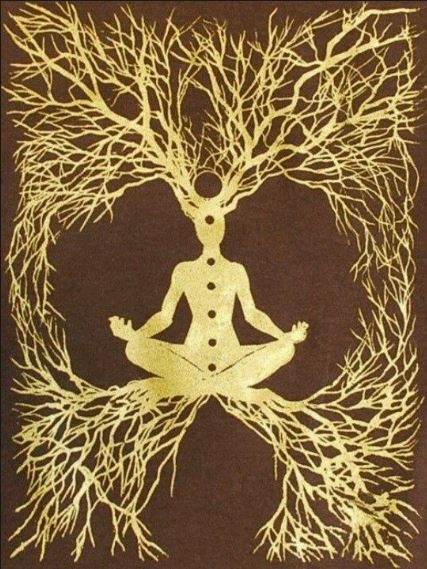
To get started on your learning journey, please review our “lesson plan” on the secrets of Cannabis.
CANNABIS AND THE SECRET OF ENLIGHTENMENT
The article below supports the audio above:
THE TRUTH ABOUT ENDOCANNABINOIDS
Next, listen to the audio below to learn about the 20,000 year history of cannabis and why it was legally suppressed in the United States and perhaps your own country.
MOST USEFUL PRODUCT OF 20,000 YEARS
Cannabis has been the most useful plant in history that has been worshiped by the ancients and reviled by Western science. From the highest praise for the sap of the hemp plant, called soma, to the derogatory term “weed”, cannabis is the most misunderstood and mysterious plant. Ancient Siberian shamans believed that cannabis came from heaven as a gift from the gods, while the Hindu culture of India believed that the god Shiva himself brought it to earth as a sacred drink that the gods use to maintain their enlightened consciousness and immortality.
 On the other hand, in America, about one third of the people in jail are there because of a drug conviction involving marijuana. Many times, it is a tiny part of a “joint” in the ashtray that sends these recreational marijuana “criminals” to jail. At this point, seventeen American states have legalized some aspect of medical or recreational marijuana, yet many people in those very states are still in jail for possession of marijuana or even simply “marijuana paraphernalia.” This mysterious plant has a pervasive effect on society throughout the world and may hold the keys to solving many illnesses, commercial needs, and possible economic liberty.
On the other hand, in America, about one third of the people in jail are there because of a drug conviction involving marijuana. Many times, it is a tiny part of a “joint” in the ashtray that sends these recreational marijuana “criminals” to jail. At this point, seventeen American states have legalized some aspect of medical or recreational marijuana, yet many people in those very states are still in jail for possession of marijuana or even simply “marijuana paraphernalia.” This mysterious plant has a pervasive effect on society throughout the world and may hold the keys to solving many illnesses, commercial needs, and possible economic liberty.
There are those who get upset at even the mention of marijuana, pot, weed, hemp, medical marijuana or any reference whatsoever to the cannabis plant. Americans will argue with you that even hemp should not be legal, even though it is widely used and legal in almost every other country in the world. Many supposedly “well-informed” Americans will tell you that cannabis, in any form, is simply evil and harms anyone who uses it.
One might ask why Americans are so adamant about such misinformation. One explanation is that the “war on drugs”, which lumped marijuana in with narcotics, truly brain-washed Americans into a stupor of ignorance and disinformation that may not be able to be undone. Even in states where marijuana (which we prefer to call cannabis) is legal and there are medical advances in the treatment of almost every illness with CBDs, THCs, and the many other amazing substances in cannabis, brain-washed people will not hear a single word of the research. Modern science is rocketing forward in accepting the wonders of cannabis and its seemingly endless uses.

The endocannabinoid system in the human body is one of the most exciting new discoveries of the century, yet you can hardly find an American who knows that cannabis, in all its forms, feeds and nourishes this most important system of the body that controls the endocrine gland system. In just the last five years, the primal importance of the endocannabinoid system has shocked medical science and has rewritten what we know about the human body.
What is the big secret of cannabis that has caused so much obfuscation, conflation, confabulation and nonsensical lies that have driven society to worship or revile this plant? What magical properties of this plant have caused 10,000 years of recorded history to spend so much time on figuring out all of the wondrous effects that can be derived from its substances?
These questions cannot be answered easily, but we will try in this article to shine light on the nature and characteristics of this sacred plant and try to unravel the mysteries enshrouding cannabis. But first, the reader must be willing to open their mind to the 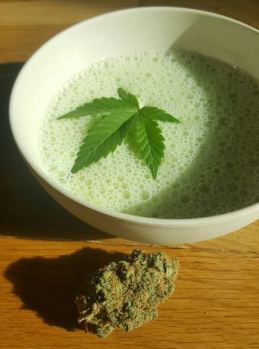 possibility of discoveries that go beyond modern science’s limited view. The modern materialistic world-view condemns 10,000 years of religion worship and devotion to the magical effects of cannabis on human consciousness, health, and well-being. Cannabis, in its oldest and most commonly used form is simply dried and powdered marijuana buds with a little water – a drink the Hindus call bhang, the sacred soma drink of the gods.
possibility of discoveries that go beyond modern science’s limited view. The modern materialistic world-view condemns 10,000 years of religion worship and devotion to the magical effects of cannabis on human consciousness, health, and well-being. Cannabis, in its oldest and most commonly used form is simply dried and powdered marijuana buds with a little water – a drink the Hindus call bhang, the sacred soma drink of the gods.
Bhang is available throughout India everywhere and there have been no noted negative effects over the millennia, even though everyone, including children and ascetic monks, drink bhang regularly. Very complicated mixtures of bhang are also used as an entheogen, a religious tool to attain transcendental experiences with higher beings during sacred rituals. Cannabis is the oldest known plant used as a religious drink to attain what the Greeks called divine nectar and ambrosia and the Hindus called amrita, soma, or usana.
Because the study of the effects of cannabis have been curtailed in America because marijuana was illegal, Western science is far behind the rest of the world in understanding the healing effects of cannabis. Even the use of hemp as a commercial product is only just beginning in America. The hemp industry is a threat to tobacco, pharmaceuticals, food, lumber, paper, oil, plastics, clothing, building supplies, medicine, and the general bureaucratic status quo that would be disrupted by a large influx of competition. Cannabis can be used to build every aspect of a house and there is almost nothing that cannot be enhanced by including one of the over 500 useful substances derived from this plant. This is one of the reasons there has been a continuing war against cannabis in America for over a hundred years.
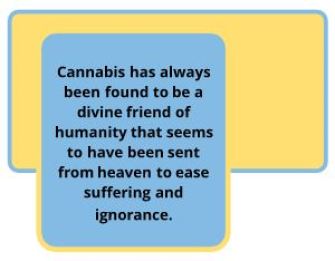 Just a few short years ago in America, before cannabis and hemp were specifically outlawed, there were many “tonics” available over-the-counter that were as common as aspirin. These mixtures experimented with the derivatives of cannabis and created quite effective medicines. These cannabis tonics were a tremendous threat to the burgeoning industry of pharmaceutical drugs.
Just a few short years ago in America, before cannabis and hemp were specifically outlawed, there were many “tonics” available over-the-counter that were as common as aspirin. These mixtures experimented with the derivatives of cannabis and created quite effective medicines. These cannabis tonics were a tremendous threat to the burgeoning industry of pharmaceutical drugs.
Big drug companies began making synthetic versions of the insolated derivatives from cannabis and patented their “new” proprietary drugs. Cannabis, as a “cure all” became the target of corporate machinations that aimed to brain-wash every American into believing that anything derived from cannabis was an evil poison that must be outlawed. Indeed, the drug companies prevailed in the battle until hemp and marijuana became legal in a number of states. Big-Pharma is still fighting the battle by creating synthetic forms of CBDs and THCs that are now approved by the Food and Drug Administration. Big-Pharma is also trying to buy-out the larger sources of cannabis to control the market.
As research on cannabis continues, the astounding successes are shocking the medical world. A specific type of hash oil, derived from cannabis, has had tremendous success stopping cancer and many other illnesses. The treatment with this THC extract is so  effective that the practitioners in Canada who use the Rick Simpson THC extract are booked solid with clients who come with terminal illnesses and leave a few months later with no trace of the disease.
effective that the practitioners in Canada who use the Rick Simpson THC extract are booked solid with clients who come with terminal illnesses and leave a few months later with no trace of the disease.
This type of cannabis treatment is not performed in America, but in some states, you can buy Rick Simpson oil through a medical marijuana clinic. This treatment is quite dramatic and should only be utilized under the care of a physician. Other people self-medicate with THC extracts by taking small amounts of the substance before sleep so that the “high” from the THC does not affect their work day. This treatment is just one of many that have been developed in Canada and other countries but are not allowed in America.
Even though smoking cannabis has also been used in religion rituals and rites for millennia, both as hash and burning the marijuana bud, there is no specific need to burn the leaf and bud in today’s medical marijuana milieu. There are many forms of TCHs and CBDs that do not require smoking. You can get practically anything imaginable made from CBDs and THCs including: cool aid, chocolate bars, gummy bears, liquid drops, pills, vapes, caps, edible hash, edible Rick Simpson oil, and many other forms of delivery. In terms of hemp, practically any food substance or cosmetic can have hemp added to the mixture. Hemp products and hemp CBDs are so common now that you find them in convenience stores, Walmart, K-Mart, most every pharmacy, and especially vitamin shops.
This flood of hemp and cannabis into the American markets demonstrates that from ancient times to modern times, cannabis has never been found to harm anyone and, in fact, has been healing people and raising consciousness since the beginning of recorded history. Cannabis has always been found to be a divine friend of humanity that seems to have been sent from heaven to ease suffering and ignorance.
Many of you asked about Rick Simpson Oil. Below are two videos that you may find informative.
THE HISTORY OF CANNABIS
Cannabis sativa appears in prehistory as both a sacrament and recreational herb throughout central Asia and the Ancient Near East. Hemp was the first plant to be cultivated and its history is only slightly understood. Archaeological evidence suggests that Aryan peoples of central Asia (who later migrated into India, Persia, the Levant, and Greece) introduced cannabis to other cultures of the steppe such as the Scythians, Thracians, and Dacians. The Dacians had a class of shamans who burned cannabis sativa on a brazier as incense in order to access trance states.
The Five Sacred Plants of India are considered the “Tree of Life” and consist of the following: Asvattha [sacred fig, bodhi tree of enlightenment], Darbha [sacred grass], King of Plants is Soma [juice of a plant], Cannabis, and Rice are the healing balms. These are the five sacred plants or herbs mentioned in the Indian Vedas. Soma is also called amrita or the heavenly dew of the gods.
Cannabis sativa appears in Mahayana Buddhist scripture and artwork depicting the Buddha with serrated leaves in his begging bowl [attributed to the plant soma] which appear very similar to cannabis sativa leaves. One Buddhist legend states that in his quest for enlightenment, the Buddha subsisted on one hemp seed daily.
Though India’s use of cannabis and hemp are well documented, China seems to have focused more on hemp rather than the strains of cannabis. In ancient China, hemp is included in the list of the five sacred grains along with rice, soy bean, millet, and barley. Hemp fiber was also used to make rope, clothes, and many other items. Hemp was as important as the principal foods the Chinese needed for life.
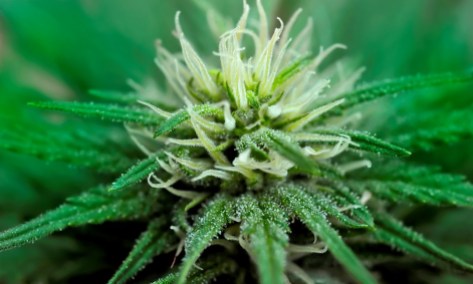
In India, there is a cannabis drink that is very popular that is used by everyone, including monks, called bhang. Even the gods drink bhang and it is said that it is Shiva’s favorite drink. Bhang is made by exposing cannabis sativa flowering tops and foliage alternately to sunlight and dew in order to make them wilt before being sun-dried a final time. Bhang is sometimes mixed with foods such as ghee (clarified butter), milk, flour, honey, onions, or curry spices such turmeric and coriander, then consumed orally as a medicine or for recreational purposes. Some recreational oral preparations also mix cannabis sativa or cannabis indica with opium poppy seeds, strychnine tree seeds, and datura metel or other species of datura.
Cannabis was used by many cultures that you might find surprising. Etymological analysis of the Old Testament indicates that Cannabis sativa may have been a sacramental herb in ancient Israel and in Levantine states (Jordan, Syria, etc.), and that the word cannabis may even come from the Hebrew word for this herb, kaneh-bos, meaning fragrant reed. In Biblical times, cannabis sativa flowering tops were infused into olive oil and applied topically to the skin where their psychoactive compounds would be absorbed.
The oldest pseudo-mythological references to cannabis come from an obscure culture called Bon. The ancient culture of Bon is little known but is the original shamanistic Himalayan religion centered on the teachings of Tonpa Shenrab Miwoche. Shenrab had an extraordinary rapport with plants, animals, and nature spirits and thus developed the original Buddhist medicinal texts, bred horses, and widely used cannabis and hemp as key elements in religious rituals and for cultural needs.
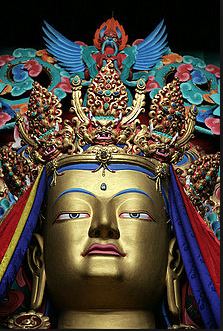 According to Bon history, Tibetan medicinal texts originated in the Himalayan region, some dating back to the time of Tonpa Shenrab (18,000 years ago). The Tibetan medicine text, Bumzhi, has four chapters about Tibetan medicine and plants, particularly roots, leaves, tree branches, tree fruits, and so forth.
According to Bon history, Tibetan medicinal texts originated in the Himalayan region, some dating back to the time of Tonpa Shenrab (18,000 years ago). The Tibetan medicine text, Bumzhi, has four chapters about Tibetan medicine and plants, particularly roots, leaves, tree branches, tree fruits, and so forth.
Traditionally, plants are pounded, dried and made into powders and round pills containing a number of different plants. Making the medicine itself is a very important ritual, and the plants are blessed repeatedly as they are prepared. Rituals such as the Medicine Buddha are still performed in conjunction with the alchemical processes used to activate substances. The Medicine Buddha is the compassionate manifestation of Tonpa Shenrab, the great Enlightened One of Bon who brought to humanity the wisdom of the natural world.
Cannabis has lived alongside humans for over 10,000 years, cultivated for food, fiber, and fodder, as well as for religious and medicinal purposes. It was eventually spread by humans to nearly every region of the planet. Cannabis is one of the oldest known agricultural plants, and its multitude of uses ensured that migrants and traders took these seeds with them wherever they traveled. Prehistoric humans, who did not practice agriculture but most likely harvested wild cannabis seeds for food, spread the plant throughout the Eurasian landmass over 10,000 years ago. Later civilizations spread cannabis to the Middle East, Africa, Southeast Asia, Europe and eventually the New World. Without human intervention, cannabis would have been confined to Central Asia, as its innate dispersal mechanisms are extremely limited.
It is important to distinguish between the two familiar subspecies of the cannabis plant –cannabis sativa, known as marijuana, has psychoactive properties. The other plant is cannabis sativa L. This subspecies is known as hemp; it is a non-psychoactive form of cannabis.
A second psychoactive species of the plant, cannabis indica, was identified by the French naturalist Jean-Baptiste Lamarck, and a third, uncommon one, cannabis ruderalis, was named in 1924 by Russian botanist D.E. Janischevisky.
Cannabis plants are believed to have evolved on the steppes of Central Asia, specifically in the regions that are now Mongolia and southern Siberia. The recorded history of cannabis use goes back as far as 12,000 years with the Bonpo shamans, which places the plant among humanity’s oldest cultivated crops. Burned cannabis seeds have also been found in kurgan burial mounds in Siberia dating back to 3,000 B.C., and some of the tombs of noble people buried in Xinjiang region of China and Siberia around 2500 B.C. have included large quantities of mummified psychoactive marijuana.
Cannabis came to the Middle East between 2000 B.C. and 1400 B.C., and it was used there by the Scythians, a nomadic Indo-European group. The Scythians carried the drug into southeast Russia and Ukraine. Germanic tribes brought the drug into Germany, and cannabis went from there to Britain during the 5th century with the Anglo-Saxon invasions. Over the next centuries, cannabis migrated to various regions of the world, traveling through Africa, reaching South America in the 19th century and being carried north afterwards, eventually reaching North America.
 Both early Greek history and modern archeology show that Central Asian peoples were utilizing cannabis over 2,500 years ago. The Greek Histories of Herodotus (440 BC) record the early Scythians using cannabis steam baths. What Herodotus called the “hemp-seed” was the whole flowering tops of the plant, where the psychoactive resin is produced along with the fruit and seeds. Herodotus also noted that the Thracians, a people who had intimate contact with the Scythians, introduced the plant to the Dacians where it became popular among a shamanic cult named the Kapnobatai, or “Those Who Walk in the Clouds.”
Both early Greek history and modern archeology show that Central Asian peoples were utilizing cannabis over 2,500 years ago. The Greek Histories of Herodotus (440 BC) record the early Scythians using cannabis steam baths. What Herodotus called the “hemp-seed” was the whole flowering tops of the plant, where the psychoactive resin is produced along with the fruit and seeds. Herodotus also noted that the Thracians, a people who had intimate contact with the Scythians, introduced the plant to the Dacians where it became popular among a shamanic cult named the Kapnobatai, or “Those Who Walk in the Clouds.”
Burial tombs of the Phrygians and Scythians frequently contained cannabis sativa seeds. Tarim mummies excavated near Turpan in Xinjiang province of Northwestern China were buried with sacks of cannabis next to their heads. One shamanistic tomb that contained a leather basket with well-preserved cannabis leaves, shoots, seeds and a wooden bowl with cannabis traces. A burial mound at Pazyryk in the Altai Mountains of Siberia revealed a bronze vessel filled with the remains of hemp seeds.
Africans have had a long tradition of smoking hemp in gourd pipes. Cannabis was used in Africa as an antiseptic, to treat tetanus, hydrophobia, delirium tremens, infantile convulsions, neuralgia and other nervous disorders, cholera, menorrhagia, rheumatism, hay fever, asthma, skin diseases, and protracted labor during childbirth.
In Africa, there were a number of cults and sects of hemp worship. The Bashilenge, living on the northern borders of the Lundu, between Sankrua and Balua cultivated large plots of land with hemp and cannabis. The Bashilenge called themselves Bena Riamba, “the sons of hemp.” They greeted each other with the expression “moio”, meaning both “hemp” and “life.” They attributed universal magical powers to hemp, which was thought to combat all kinds of evil and they took it when they went to war and when they traveled. The hemp pipe assumed a symbolic meaning for the Bashilenge somewhat analogous to the significance which the peace pipe had for American Indians. No holiday, no trade agreement, no peace treaty was transacted without it.
The ancient Germanic tribes also used cannabis extensively. The word hemp derives from Proto-Germanic “hanapiz”, the same Scythian word that cannabis derives from. In ancient Germanic paganism, cannabis was associated with the Norse love goddess, Freya. The harvesting of the plant was connected with an erotic festival. It was believed that Freya lived as a fertile force in the plant’s feminine flowers and by ingesting them one became influenced by this divine force.
The Assyrians, Egyptians, and Hebrews, among other Semitic cultures of the Middle East, mostly acquired cannabis from Aryan cultures and have burned it as an entheogenic incense as early as 1000 BC. In Exodus 30:23 of the Bible, God directed Moses to make a holy oil composed of “myrrh, sweet cinnamon, kaneh bosm and kassia.” The root kan has two meanings in many Ancient languages -hemp and reed.
Cannabis oil was used throughout the Middle East for centuries. It is mentioned in the original Hebrew Old Testament and in its Aramaic translations as both incense and as intoxicant. Cannabis, as an incense, was used in the temples of Assyria and Babylon because “its aroma was pleasing to the Gods.”
 ENTHEOGENIC USE OF CANNABIS AND HEMP
ENTHEOGENIC USE OF CANNABIS AND HEMP
Cannabis has been used in religion contexts as an entheogen in Indian since the Vedic period (2000 BC). Cannabis has been used by shamanic and pagan cultures to ponder deeply religious and philosophical subjects related to their tribe or society, to achieve a form of enlightenment. There are several references in Greek mythology to a powerful drug that eliminated anguish and sorrow. Herodotus wrote about early ceremonial practices by the Scythians using entheogens. Itinerant Hindu saints have used cannabis as an entheogen in the Indian subcontinent for centuries. Mexican, Mayan and Aztec cultures used cannabis, along with other entheogens in religious rituals.
The earliest known reports regarding the sacred status of cannabis in the Indian subcontinent come from the Atharva Veda which mentions cannabis as one of the “five sacred plants… which release us from anxiety” and that a guardian angel resides in its leaves. The Vedas also refer to it as a “source of happiness,” “joy-giver” and “liberator,” and in the Raja Valabba, the gods send hemp to the human race so that they might attain delight, lose fear, and have sexual desires. Many households in India own and grow a cannabis plant to be able to offer cannabis to a passing sadhu (ascetic holy men), and during some evening devotional services it is not uncommon for cannabis to be smoked by everyone present.
Cannabis was often consumed at weddings or festivals honoring Shiva, who is said to have brought it down from the Himalayas. It is still offered to Shiva in temples on Shivaratri day, while devotional meetings called bhajans are occasions for devotees to consume the drug liberally. Yogis or sadhus along with other Hindu mystics have been known to smoke a mixture of cannabis sativa and tobacco in order to enhance meditation.
There are three common types of cannabis used in the Indian subcontinent. The first, bhang, a type of cannabis edible, consists of the leaves and plant tops of the cannabis plant. It is usually consumed as an infusion in beverage form and varies in strength according to how much cannabis is used in the preparation. The second, ganja, consisting of the leaves and the plant tops, is smoked. The third, called charas or hashish, consists of the resinous buds and/or extracted resin from the leaves of the plant. Typically, bhang is the most commonly used form of cannabis in religious festivals.
In Tantric Buddhism, cannabis is taken to facilitate meditation and also heighten awareness of all aspects of the ceremony, with a large oral dosage being taken in time with the ceremony so that the climax of the “high” coincides with the ceremony.
Scholars associated Chinese wu (shamans) with the entheogenic use of cannabis in Central Asian shamanism. The oldest texts of Traditional Chinese Medicine listed herbal uses for cannabis and noted some psychodynamic effects. According to these traditions, if one takes it over a long period of time one can communicate with the spirits, and one’s body becomes light.
In ancient China, medicine has its origin in shamans who were practicing magicians. In northeastern Asia, shamanism was widespread from Neolithic to recent times. In the far north, among the nomadic tribes of Mongolia and Siberia, the magical use of plant medicines through shamanism was widespread and common until rather recent times. After the rise of Confucianism, the ingestion of cannabis for psychoactive, ritualistic purification was eventually suppressed in China and Japan.
CANNABIS AS SOMA – THE DRINK OF ENLIGHTENMENT
Some sources from Vedic and Hindu culture and literature on the mention of cannabis for medicinal and cultural/social/religious usages is broad. Common names used in Vedic literature are (1) Bhanga (2) Indrasana (Indra’s food) (3) Vijaya or Jaya (4) Ganja (5) Usana or sana.
The hemp plant in Sanskrit is referred to as bhang and Indrasana. Indrasana, ‘Indra’s hemp’ is described in the Atharvaveda as a protector, and it is supplicated to protect all animals and properties. The gods are said to have three times created this herb and Indra has given it a thousand eyes and conferred on it the property of driving away all disease and killing all monsters; it is praised as the best of remedies and is worn as a precious talisman.
Read more at aim4truth.org
Trackback from your site.
